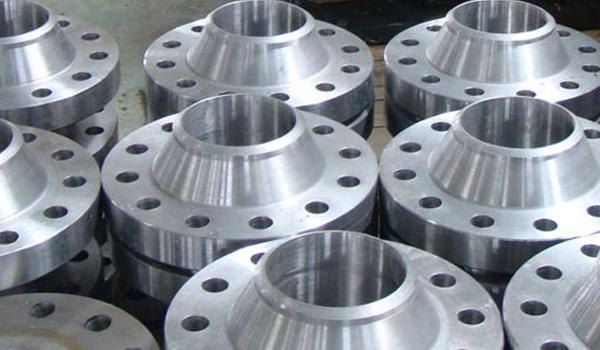Nickel Foil for Battery: The Unsung Hero of Energy Storage

In today’s technology-driven world, batteries have become an inseparable part of our daily lives. From smartphones and laptops to electric vehicles (EVs) and large-scale energy storage systems, batteries power everything. While lithium, cobalt, and graphite often take the spotlight, one material works quietly yet effectively behind the scenes—nickel foil.
Nickel foil is an essential component in battery design and manufacturing. It supports improved conductivity, structural integrity, and efficiency across a wide range of battery types, especially in high-performance lithium-ion batteries. As industries push for smaller, more powerful, and longer-lasting batteries, nickel foil is becoming more important than ever.
What is Nickel Foil?
Nickel foil is a thin, flat sheet of pure nickel, typically ranging from 0.01 mm to 0.2 mm in thickness. It is produced through processes like cold rolling, annealing, and sometimes electroplating. The end result is a highly flexible, corrosion-resistant, and conductive material that can be easily shaped and integrated into battery assemblies.
What makes nickel foil truly valuable is its unique combination of properties: excellent electrical and thermal conductivity, high resistance to corrosion, and good mechanical strength even at very thin dimensions.
Role of Nickel Foil in Batteries
Within a battery, nickel foil is not just a passive layer—it plays several active and crucial roles:
1. Current Collector
Nickel foil often serves as the current collector in battery electrodes. It helps transport electrons between the active material and the external circuit during charge and discharge cycles, ensuring minimal energy loss and high efficiency.
2. Structural Support
In addition to conducting electricity, nickel foil provides structural support for the electrode layers. It keeps the electrode material in place and ensures uniform contact, improving the battery's durability and reliability over time.
3. Corrosion Resistance
Since battery interiors can be chemically aggressive, materials used inside need to resist corrosion. Nickel foil performs well in such environments, even under high temperatures or in contact with acidic or alkaline substances.
Key Applications of Nickel Foil in Batteries
Nickel foil is widely used in various types of batteries across multiple industries. Here’s where it finds major applications:
✅ Lithium-Ion Batteries
Lithium-ion batteries dominate consumer electronics and electric vehicles. In these batteries, nickel foil is often used in the cathode and anode assembly. It improves conductivity and helps pack more energy into a compact space.
✅ Solid-State Batteries
These are next-generation batteries with a solid electrolyte. Nickel foil plays a vital role as a stable conductive layer and a current collector, contributing to better thermal performance and safety.
✅ Electric Vehicles (EVs)
Automotive battery packs rely heavily on materials like nickel to meet performance demands. Nickel foil supports higher charge/discharge rates, faster charging, and longer range.
✅ Consumer Electronics
Smartphones, tablets, and laptops demand slim and efficient batteries. Nickel foil’s flexibility and thinness make it ideal for compact battery formats where space is limited but performance is critical.
✅ Energy Storage Systems (ESS)
In large-scale systems like solar or wind backup grids, nickel foil helps improve cycle life and thermal stability, which are essential for consistent long-term operation.
Advantages of Nickel Foil in Battery Manufacturing
Using nickel foil in battery systems offers several practical advantages:
High Electrical Conductivity: Promotes efficient energy transfer with minimal resistance.
Excellent Corrosion Resistance: Ensures longevity, even in chemically aggressive environments.
Dimensional Stability: Maintains shape and function during manufacturing and cycling.
Thermal Conductivity: Helps dissipate heat, reducing the risk of overheating.
Flexibility: Can be rolled, bent, or layered, making it versatile for different battery designs.
Lightweight & Thin: Ideal for miniaturized or high-density battery applications.
These advantages make nickel foil an ideal choice for modern battery applications where performance, safety, and efficiency are non-negotiable.
Nickel Foil vs Nickel Strip – What’s the Difference?
This is a common point of confusion. While both are made of nickel, the key difference is thickness and purpose.
Nickel Foil is ultra-thin and used inside the battery as part of the electrode structure or current collector.
Nickel Strip is thicker and often used for external connections between cells, especially in spot welding applications for battery packs (e.g., in power tools or DIY lithium battery banks).
Future Outlook: Why Nickel Foil Matters More Than Ever
As the demand for green energy, electric mobility, and compact electronics continues to grow, battery technology will keep evolving. Newer battery designs will require materials that are lighter, thinner, and more efficient.
Nickel foil fits perfectly into this future.
Its versatility, recyclability, and compatibility with emerging technologies like solid-state batteries, sodium-ion batteries, and next-gen lithium chemistries make it a reliable material for tomorrow’s energy needs.
Conclusion
Nickel foil might not be the flashiest component in a battery, but it’s one of the most critical. Its conductive, corrosion-resistant, and flexible nature enables safer, longer-lasting, and more efficient batteries across industries.
Note: IndiBlogHub features both user-submitted and editorial content. We do not verify third-party contributions. Read our Disclaimer and Privacy Policyfor details.







